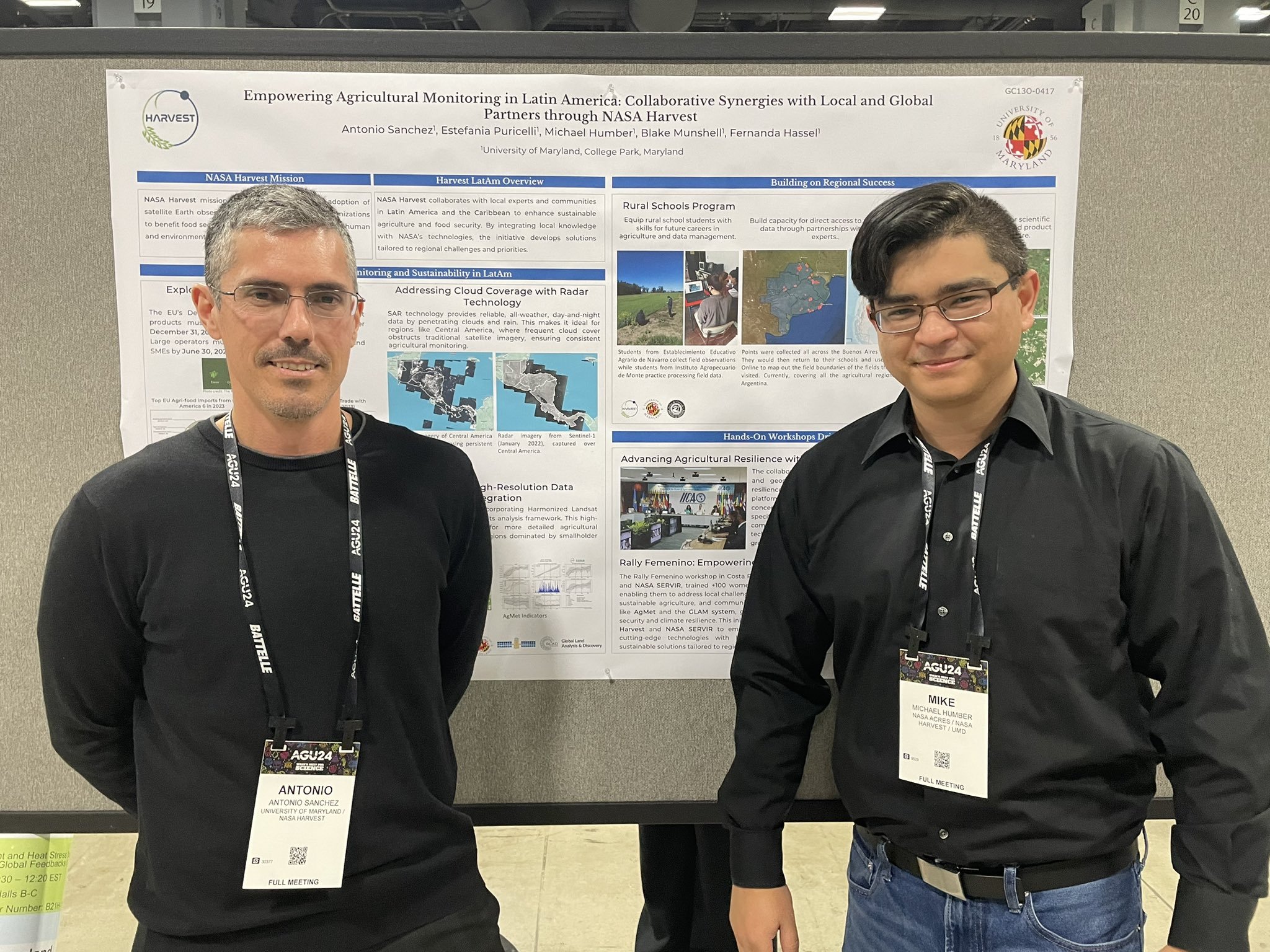NASA Harvest Highlights: A Packed Week at AGU 24!
NASA Harvest had a busy week at the American Geophysical Union’s 2024 fall meeting! We co-convened a poster session and three oral sessions with our sister consortium NASA Acres. We had 48 poster presenters and 23 oral presenters showcase their research throughout the week, focusing on U.S. and international agricultural monitoring and emerging technologies in the field of Earth observations for agriculture. We are pleased to help provide a platform for these scientists to share their findings and stay informed about the latest advancements in the field.
In addition to the above sessions, NASA Harvest team members presented in a number of other poster and oral sessions throughout the week - we have a list of NASA Harvest and food security-affiliated presentations of interest here.






“It’s great to be here at AGU,” said Mary Mitkish, NASA Harvest Deputy Director and session co-organizer, “this annual meeting is one of the largest gatherings of geoscientists in the world and is a great opportunity for us to present the methods, techniques, and products that we’re developing and likewise learn what our colleagues are working on.”
As part of the Harvest-Acres joint session titled “Satellite Solutions: Advancing Agricultural Monitoring Through Remote Sensing,” presentations showcased significant advancements in the use of satellite and remote sensing technologies to address key challenges in agriculture, food security, and environmental sustainability. Topics ranged from improving crop monitoring and yield predictions to supporting agricultural policies and mitigating severe weather risks. Several talks focused on advancing field-scale analyses, such as monitoring nitrogen status, predicting soybean and wheat yields, and tracking crop development across diverse regions. Notably, innovative approaches using machine learning, multi-satellite data fusion, and transfer learning demonstrated improved capabilities for topics ranging from yield forecasting to flood index assessments in support of crop insurance programs.
In addition, our session highlighted the role of Earth observations in addressing global agricultural concerns, such as water use efficiency trends in California, the impacts of war on cropland abandonment in Ukraine, and the potential of winter cover crops to reduce production risks. Presenters emphasized practical applications of these technologies, including monitoring conservation practices under the Inflation Reduction Act and linking satellite observations with agricultural policy and finance. Emerging tools and monitoring approaches were a key topic of discussion, further underscoring the importance of cross-scale sensing to enhance decision-making in agriculture.
“NASA Harvest is a truly international effort and we have consortium members from countries all around the world. AGU is a wonderful occasion for us to gather, discuss accomplishments and challenges of the previous year, and lay out plans for another year of successful collaboration. The meeting this year was very successful in that regard,” said Inbal Becker-Reshef, NASA Harvest Director.
